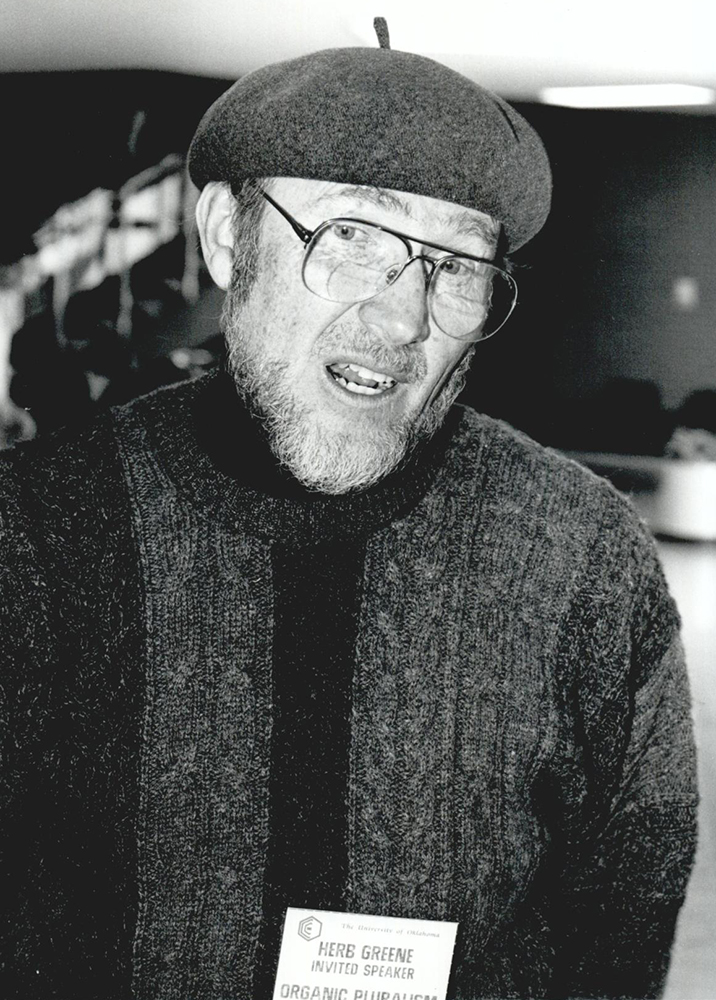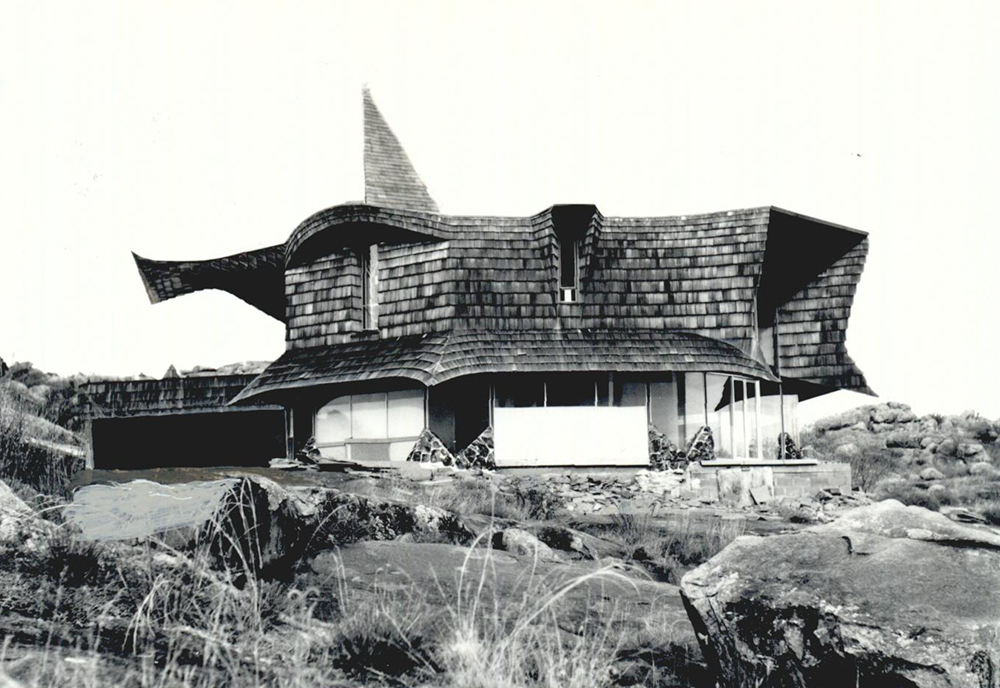
GREENE, HERB (1929– ).
Architect Herb Greene, born in Oneonta, New York, on September 13, 1929, and raised there, entered Syracuse University in 1947. In 1948 he transferred to the University of Oklahoma (OU) to study under Bruce Goff. While still a student there, Greene also worked intermittently from 1950 to 1953 for Goff at his office in Bartlesville, Oklahoma. Greene prepared both artistic renderings and working drawings for Goff's designs during this period. While immersed in Goff's office/working environment, Greene learned the importance of listening to a client's perceived needs and observed Goff's effort to execute those needs in an artistic fashion.
After Goff's departure from the University of Oklahoma, Greene taught architecture there in hope of continuing his mentor's legacy. From 1957 to 1963 he served as an assistant professor. While in Oklahoma, he designed and executed five houses, a grocery store, and two offices.
Greene believed that dialogue between the architect and client was paramount to creating a design that both could support. He subscribed to the philosophy that ultimately the users/clients needed to make their buildings their own. He did this through the incorporation of the client's personal objects into a meaningful relationship with the actual design. In most examples of his work in Oklahoma the primary material was glass in the form of windows and cullets. The remainder of the exterior materials tended towards textures that allow the viewer to understand the substance and structure of the object.
The Joyce House (listed in the National Register of Historic Places, NR 11000338), near Snyder in Kiowa County, symbolizes Greene's design philosophy. The most obvious characteristic is the building's location on a granite outcrop that serves as the structure's base and allows for the geometric pattern of the design to open into the larger interior spaces. Through the use of large, floor-to-ceiling windows, the interior spaces then extend to the exterior and into the Oklahoma landscape.
Herb Greene's organic architecture continues to intrigue architects, historians, and the community at large. Like many architects of his era, he created art on the Oklahoma landscape that functioned to house people. His works in Oklahoma will remain important features of the landscape because each expressed a diverse theme as it pertained to the client's needs. As with modern art, modern architecture will continue to be debated: Was the intent for the creator or for the beholder?
In 1964 Greene left Oklahoma to become an assistant professor of architecture at the University of Kentucky. There he continued to design buildings that reflected client-centered regional architecture. In 1982 he retired to Berkeley, California, but remained professionally active. He also published three books related to his art.
See Also
ARCHITECTURE, WILLIAM WAYNE CAUDILL, BRUCE ALONZO GOFF, PAUL WESLEY HARRIS, ARTHUR BLAINE IMEL, JR.







